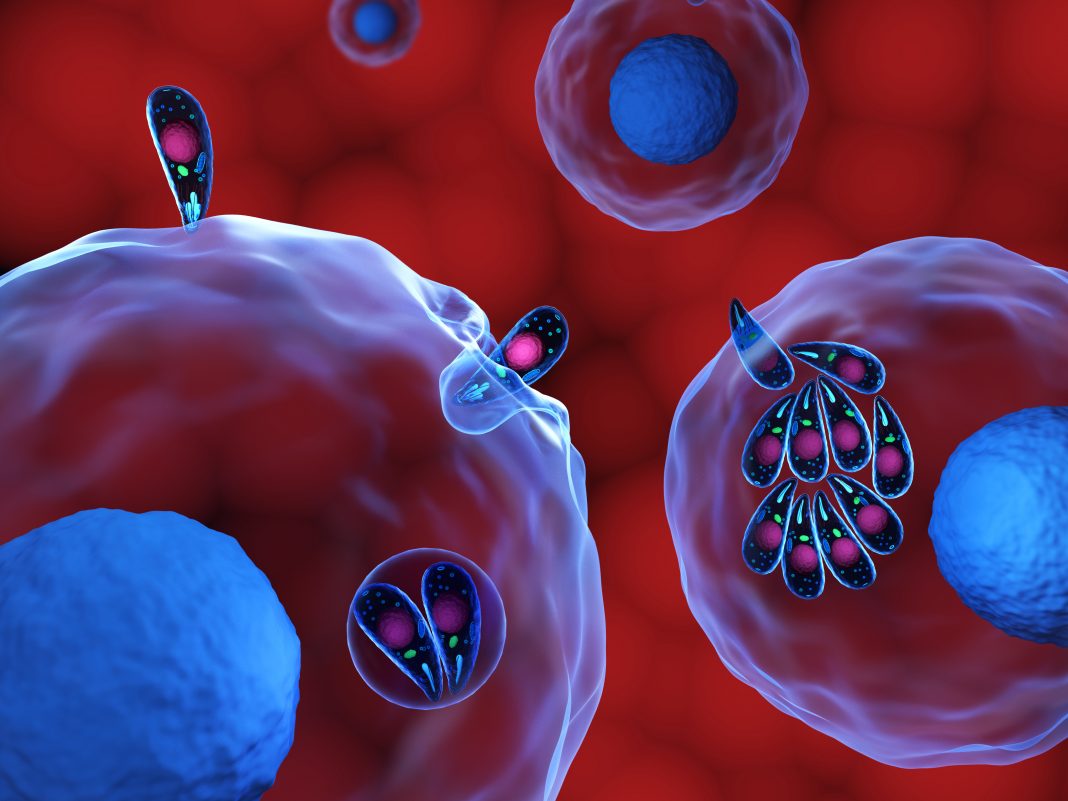Toxoplasma is an enigmatic little organism, to say the least, as this parasite has been linked to serious infections and death, in addition to being completely benign for infected individuals with functioning immune systems. Moreover, toxoplasma infections have been casually linked to risk-taking behavior among infected animals and humans as well as neurological disorders such as schizophrenia and Alzheimer’s disease. Amazingly, this single-celled parasite is capable of infecting almost all cell types, across all animal species. Up to one-third of Toxoplasma gondii infections in people happen through contact with cat feces or contaminated food and water.
Once inside a host cell, the parasite begins to divide exponentially, a process that requires a great deal of resources. The parasite extracts most of the nutrients it needs for replication from its host cell, including essential amino acids like arginine. Because arginine is quickly depleted from the host cell, researchers wanted to learn where the parasite gets more of the amino acid to fuel its expansion into the hundreds.
Now, investigators from the Indiana University (IU) School of Medicine identified a cellular starvation stress response that occurs within two hours after Toxoplasma infection. Findings from the new study were published recently in PLOS Pathogens through an article titled “Regulation of arginine transport by GCN2 eIF2 kinase is important for replication of the intracellular parasite Toxoplasma gondii.”
“Pathogens that live and grow inside of cells face special challenges,” noted senior study investigator Bill Sullivan, PhD, professor of pharmacology and toxicology at IU. “Intracellular pathogens have to replicate without raising alarms, but in order to grow, they need to pilfer nutrients from the host. Our study shows that Toxoplasma gets additional nutrients simply by hijacking a starvation response already built into the host cell.”
In the current study, the research team used a variety of mutant host cells to discern that a protein called GCN2 becomes activated as parasites consume the host cell’s arginine supply. Leonardo Augusto, PhD, postdoctoral fellow at IU, mapped out the cascade of events following GCN2 activation, leading him to discover that host cells infected with Toxoplasma express more of an arginine transporter called CAT1 at their cell surface. CAT1 brings more arginine into the infected cell so Toxoplasma can continue to binge.
“Our results show that as Toxoplasma depletes host cell arginine, the host cell phosphorylates eIF2 via protein kinase GCN2 (EIF2AK4), leading to induced ATF4,” the authors wrote. “Increased ATF4 then enhances expression of the cationic amino acid transporter CAT1 (SLC7A1), resulting in increased uptake of arginine in Toxoplasma-infected cells. Deletion of host GCN2, or its downstream effectors ATF4 and CAT1, lowers arginine levels in the host, impairing proliferation of the parasite.”
These findings suggest infected host cells can sense their nutrients being depleted. Oblivious to the parasites growing inside them, the host cells unwittingly gear up to bring in more arginine to compensate for the loss. The identification of proteins like GCN2 that are important for parasite growth and replication may serve as promising new drug targets to treat intracellular pathogens.
“Our findings establish that Toxoplasma usurps the host cell integrated stress response to help secure nutrients that it needs for parasite replication,” the authors concluded.






